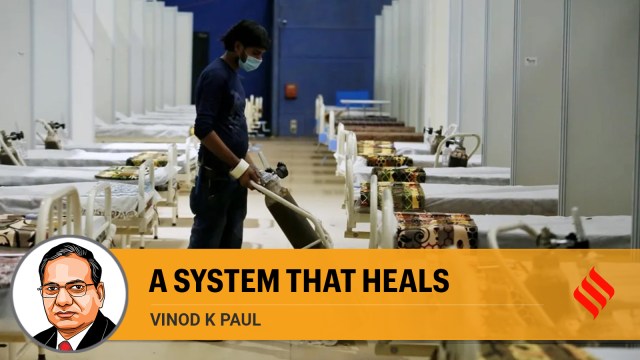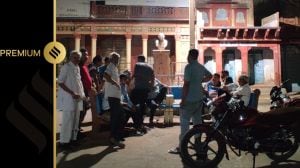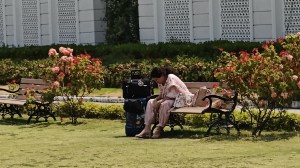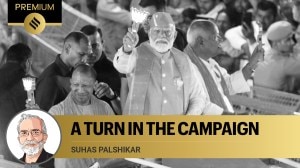- India
- International
Good news for India’s healthcare system
Government health expenditure is increasing and out-of-pocket spending is declining consistently
 The declining OOPE is a product of several enablers. AB-PMJAY beneficiaries today do not have to borrow or sell assets to access surgical and medical treatment for serious conditions, including cancer.
The declining OOPE is a product of several enablers. AB-PMJAY beneficiaries today do not have to borrow or sell assets to access surgical and medical treatment for serious conditions, including cancer.The National Health Policy (NHP) 2017 envisions universal access to quality and affordable healthcare. The nation’s commitment to increasing public expenditure on health in recent years is evident from the National Health Accounts (NHA) data, including the provisional estimates for 2020-21 and 2021-22.
These show that government health expenditure (GHE) as a proportion of GDP increased by an unprecedented 63 per cent between 2014-15 and 2021-22. It rose from 1.13 per cent of GDP in 2014-15 to 1.35 per cent in 2019-20. This further increased to 1.60 per cent in 2020-21 and to 1.84 per cent in 2021-22.
In per capita terms, GHE increased from Rs 1,108 to Rs 2,014 between 2014-15 and 2019-20. This trend has continued with per capita government expenditure reaching Rs 2,322 in 2020-21 and Rs 3,156 in 2021-22 — almost three times the level of 2014-15 as per the provisional estimates.
In another important trend, the expenditure on government-financed insurance has increased 4.4 fold from Rs 4,757 crore in 2013-14 to Rs 20,771 crore in 2021-22. This reflects rising investments in the Ayushman Bharat Pradhan Mantri Jan Arogya Yojana (AB PMJAY) and state health assurance/insurance schemes. The share of social security expenditure on health (which includes government-funded health insurance, medical reimbursement to government employees, and social health insurance programmes) has increased from 5.7 per cent in 2014-15 to 9.3 per cent in 2019-20 of the total health expenditure.
There has been a consistent decline in Out-of-Pocket Expenditure (OOPE) as a share of the total health expenditure — it dropped from 62.6 per cent to 47.1 per cent between 2014-15 and 2019-20. This trend has continued with the share of this expenditure dipping to 44.4 per cent in 2020-21 and to 39.4 per cent in 2021-22 as per provisional NHA estimates. This has given much relief to people. The resilience of the health system was evident when the OOPE continued to decline in the face of the raging virus during the Covid-19 pandemic (2020-21 and 2021-22).

The declining OOPE is a product of several enablers. AB-PMJAY beneficiaries today do not have to borrow or sell assets to access surgical and medical treatment for serious conditions, including cancer.
The utilisation of government facilities, especially for inpatient care and institutional deliveries, has gone up as per the National Sample Survey (2017-18). Free ambulance services, strengthened government secondary and tertiary services and the Pradhan Mantri National Dialysis Programme (under which over 2.59 crore free dialysis sessions have been held since 2016) are important contributors to averting OOPE.
Drugs and diagnostics are a major driver of out-of-pocket spending. Free drugs and diagnostics services in facilities, including those at over 1,69,000 Ayushman Arogya Mandirs (AAMs, Health and Wellness Centres) have led to major financial savings for families. The subcentre AAMs provide 105 medicines and 14 diagnostic tests free. The primary health centre AAMs are mandated to provide as many as 172 medicines and 63 diagnostic tests free. Early screening and free treatment of non-communicable diseases, as mandated at AAMs, will prolong healthy life and avert catastrophic expenditure on treatment of their future serious life-threatening complications.
Today, through more than 10,000 Jan Aushadhi Kendras, over 1,900 quality generic medicines and nearly 300 surgical items are being sold at a low cost in practically all the districts. Estimates show that since 2014, a saving of Rs 28,000 crore has accrued to the consumers by this scheme. Likewise, price regulation of coronary stents, orthopaedic knee implants, cancer drugs and other essential medicines has resulted in a saving of Rs 27,000 cr per annum to the people.
Economic surveys have also reported an increasing trend in health-related expenditure by the government. As a share of GDP, it was 1.6 per cent in FY 2020-21 and 2.2 per cent in FY 2021-22 (revised estimate). Apart from expenditure on health services and goods, the estimates of economic surveys also incorporate spending on important social determinants of health, especially water supply and sanitation.
Safe drinking water and sanitation have remarkable positive health effects. At the time of the launch of the Jal Jeevan Mission in 2019, only 17 per cent of rural households had access to tap water. As of now, about 76 per cent have a functional household tap connection. As per a WHO report, once tap water is made available in every rural household, it would save four lakh lives over five years. Likewise, the WHO has estimated that the Swachh Bharat Mission (SBM) Grameen, which has resulted in rural India being open defecation free (ODF), would have averted more than 3,00,000 deaths (due to diarrhoea and protein-energy malnutrition) between 2014 and October 2019.
The rising trends in public health expenditure and a steady decrease in OOPE alongside increasing shares of GHE and social security schemes on healthcare, indicate a move towards a more progressive health system. Funds for infrastructural support under various schemes such as Pradhan Mantri Swasthya Suraksha Yojana (aimed at creating medical colleges and new AIIMSs), Pradhan Mantri Ayushman Bharat Infrastructure Mission and Emergency Response and Health System Preparedness Package (aimed at developing pediatric and adult ICUs) are strengthening the country’s health infrastructure. Further, the health grants to local bodies under the 15th Finance Commission award (amounting to Rs 70,000 crore) are being injected into the primary health system.
India’s health system is on the reform-perform-transform path to make Universal Health Coverage a reality in the near future. In this endeavour, recent trends of increasing government financing for health and declining stress of OOPE are in the right direction.
The writer is member (health), NITI Aayog. Views are personal
40 Years Ago
EXPRESS OPINION
More Explained
May 18: Latest News
- 01
- 02
- 03
- 04
- 05
































